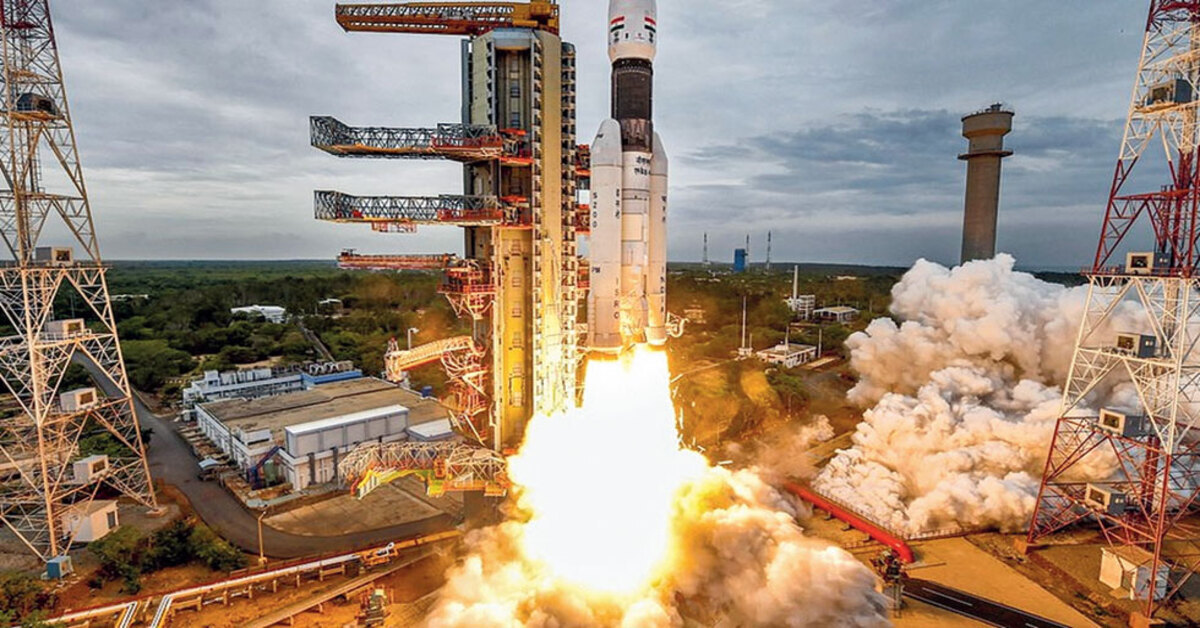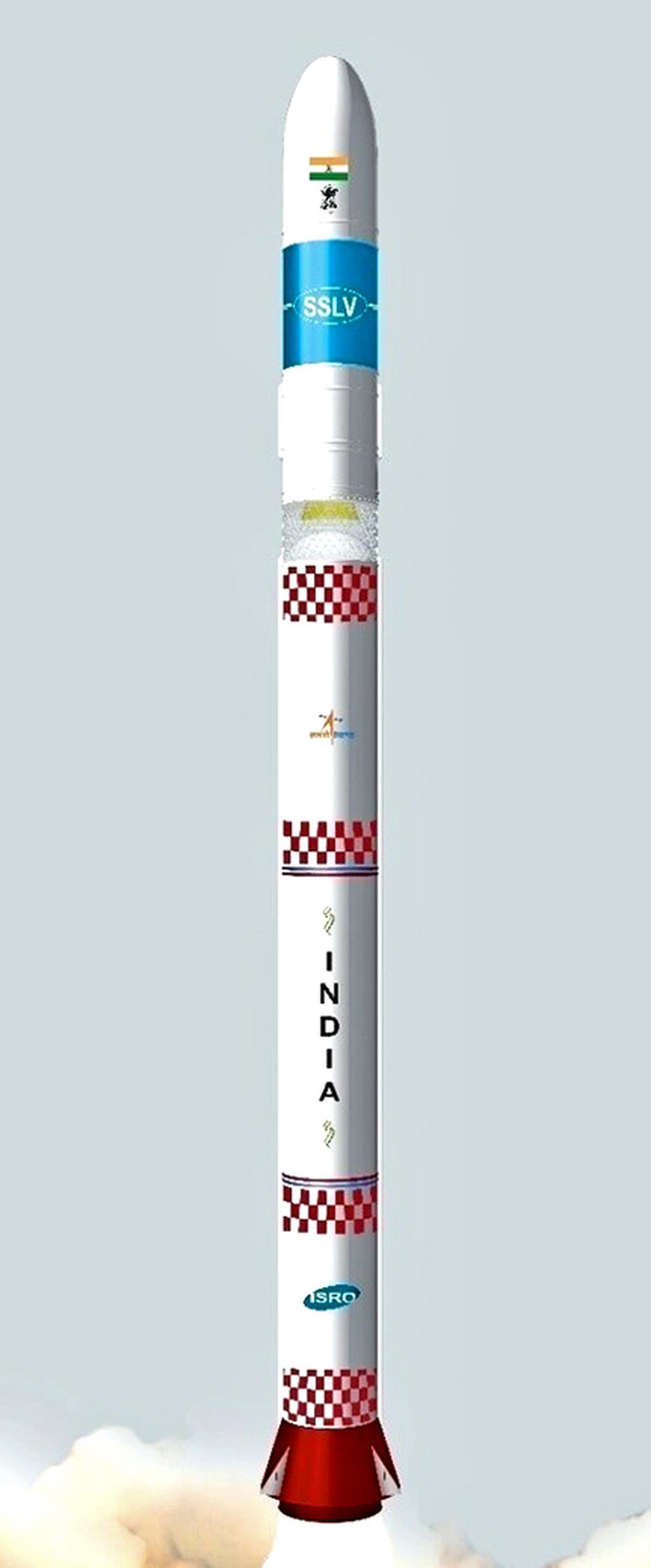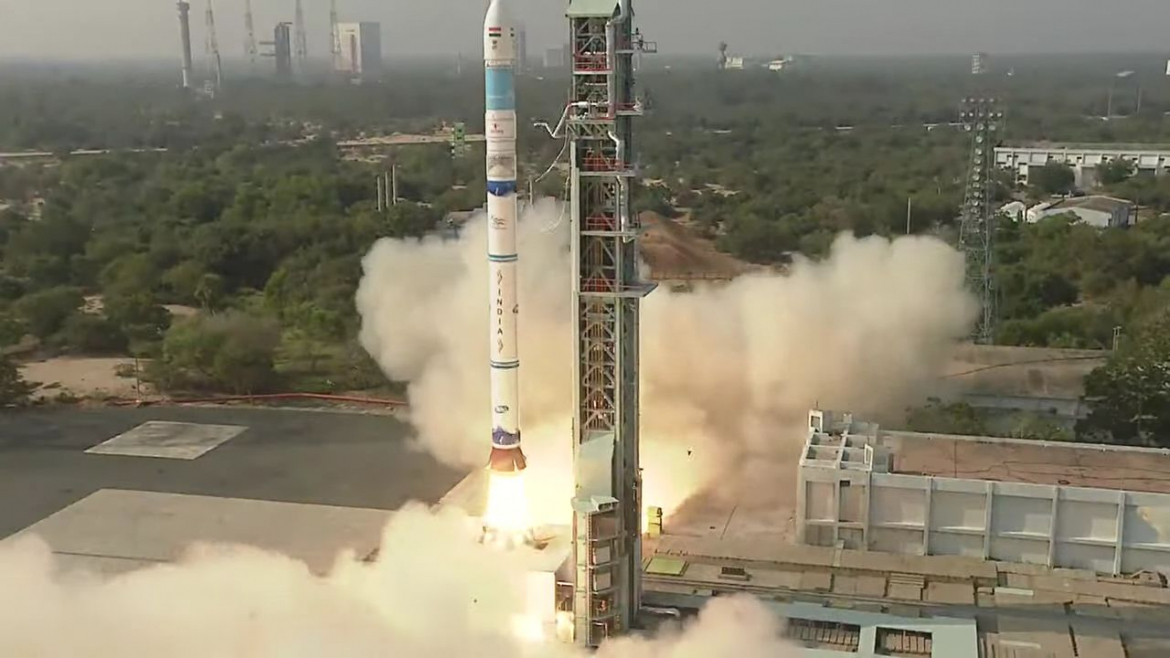5.01.2023
ISRO Chairman S Somnath said India is also planning to send scientific missions to Mars and Venus this year apart from attempting to send a Land Rover to the Moon.

ISRO’s Small Satellite Launch Vehicle (SSLV) may make its second flight next month. ISRO Chairman S Somnath told media at the 108th Indian Science Congress that he cannot tell any exact date yet but they are planning a test flight next month.
SSLV was intended to launch satellites up to 500 kg in planar orbit. But it had failed in its maiden development flight on August 7 last year. Both the satellites Earth Observation Satellite (EOS)-2 and Azadisat sent with the rocket could not be placed in the correct orbit and failed.
It did turnout to be a big disappointment not only for ISRO but also fore the whole country as the world was eyeing at India’s trail. Just like Mangalyaan (Mission Mars), Chandrayaan Mission would have also added another feather in India’s science technology. But however, after first failed attempt, ISRO is back in action.
ISRO Chairman S Somnath said India is also planning to send scientific missions to Mars and Venus this year apart from attempting to send a Land Rover to the Moon. He further said that Chandrayaan-3 spacecraft is almost ready with orbiter, lander and rover. But they are waiting for the right time to launch the mission, which is in June. “We will try our best to be successful this time,” said ISRO chairman.
A senior ISRO official said the space agency will also test the satellite-based Automatic Dependent Surveillance-Broadcast (ADS-B) receiver system on SSLV next month. He said the space-based ADS-B system will be tested in the SSLV test flight next month.
If India’s second attempt to reach moon is successful then India would become the fourth country after the US, the USSR and China to land on the moon. Also India became the first country to reach Mars in it’s first attempt on November 5, 2013.
Quelle: APN
----
Update: 9.02.2023
.
SSLV-D2. ISRO set to launch second developmental flight of SSLV on Friday from Sriharikota
It is intended to inject EOS-07, Janus-1 and AzaadiSAT-2 satellites into 450 km circular orbit

SSLV-D2, the second developmental flight of the Small Satellite Launch Vehicle (SSLV), is scheduled for launch at 9.18 am on February 10, 2023 from the first launch pad at SDSC SHAR, Sriharikota.
In it its 15-minute flight, SSLV-D2 is intended to inject EOS-07, Janus-1 and AzaadiSAT-2 satellites into 450 km circular orbit.
One of the major objectives of the mission is to demonstrate the designed payload capability of SSLV in Low Earth Orbit (LEO).
SSLV is capable of launching 500 kg satellites into LEOs on ‘launch-on-demand’ basis.
It provides low-cost access to space, offers low turn-around time and flexibility in accommodating multiple satellites, and demands minimal launch infrastructure. It is configured with three solid propulsion stages and a velocity terminal module. It is a 34 metre tall, 2 metre diameter vehicle having a lift-off mass of 120 ton, says a release from ISRO.
The EOS-07 is a 156.3 kg satellite designed, developed and realised by ISRO. New experiments include mm-Wave Humidity Sounder and Spectrum Monitoring Payload. Janus-1, a 10.2 kg satellite, belongs to ANTARIS, US. Janus-1 is a technology demonstrator, smart satellite mission, based on Antaris software platform.
The 8.7 kg satellite AzaadiSAT-2 is a combined effort of about 750 girl students across India guided by Space Kidz India, Chennai. It aims to demonstrate LoRa and Amateur Radio communication satellites, measure radiation levels in space and demonstrate expanding satellite structure, the release said.
The first developmental flight of SSLV lifted off from SDSC on August 7, 2022. The objective of the mission (SSLV-D1/EOS-02) was to inject EOS-02 satellite of ISRO into a circular orbit of 356.2 km with an inclination of 37.21 degrees.
Quelle: The Hindu
----
Update: 10.02.2023
.
ISRO’s second SSLV mission successfully launches trio of satellites

India’s new SSLV rocket has successfully reached orbit on its second attempt Friday, six months after its maiden flight ended in failure. Friday’s launch carried a trio of satellites, lifting off at 9:18 AM local time (03:48 UTC) from the Satish Dhawan Space Centre.
The Small Satellite Launch Vehicle, or SSLV, has been developed by India to enable lower-cost and more rapidly responsive access to space for small satellite missions. It flew for the first time last August, however, an issue during stage separation meant that it could not achieve a stable orbit. As a result of that failure, changes were made to the rocket to give Friday’s launch a better chance of success.
As a demonstration flight, the principal objective of Friday’s launch were to prove SSLV’s ability to reach orbit, although the rocket also took three satellites along for the ride. The largest of these was Earth Observing Satellite-07 (EOS-07) for the Indian Space Research Organisation (ISRO). It was joined within SSLV’s payload fairing by the smaller AzaadiSAT-2 and Janus-1 spacecraft.
EOS-07 is the latest mission in ISRO’s Earth Observing Satellite (EOS) series, a loose collection of missions dedicated to collecting scientific data about our planet. EOS includes satellites that were formerly part of multiple programs — including Cartosat, Oceansat, and RISAT — as well as technology demonstrators like EOS-07. When the series began, satellites already in orbit were not renamed, so the first EOS satellite was EOS-01 — formerly RISAT-2BR2 — which was deployed by a PSLV rocket in November 2020.
The EOS-07 satellite will serve to demonstrate new technologies for future Earth-observing missions. While ISRO has not published many details about the satellite, it appears to be based on an Indian Mini Satellite 1 (IMS-1) derived bus, and it has a mass of 156.3 kilograms with an expected on-orbit lifetime of about a year. EOS-07 carries two instruments: the Millimetre-wave Humidity Sounder (MHS) and Spectrum Monitoring Payload (SMP).
AzaadiSAT-2 is the second satellite ISRO has launched for Space Kidz India, an organization aimed at giving students at schools and colleges in India the experience of building and operating space hardware. AzaadiSAT-2 replaces the organization’s first satellite, which was aboard SSLV’s unsuccessful maiden flight. In orbit, it will broadcast telemetry to amateur radio users and provide a store-and-forward communication capability. The satellite is also equipped with a number of student-built experiments including a low-resolution camera and radiation detector whose output will also be made available to amateur radio enthusiasts.
